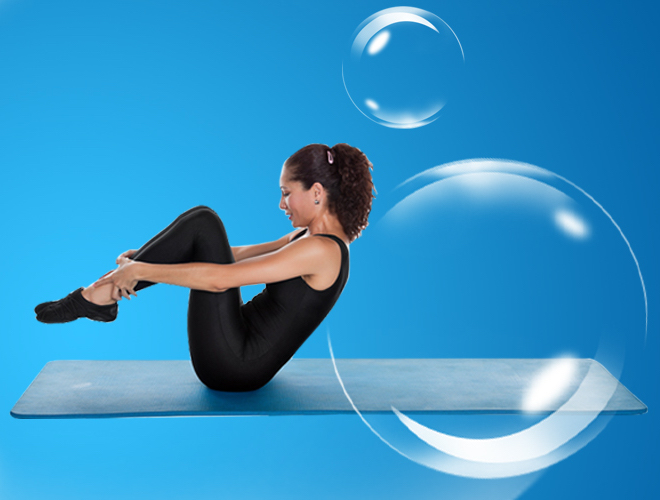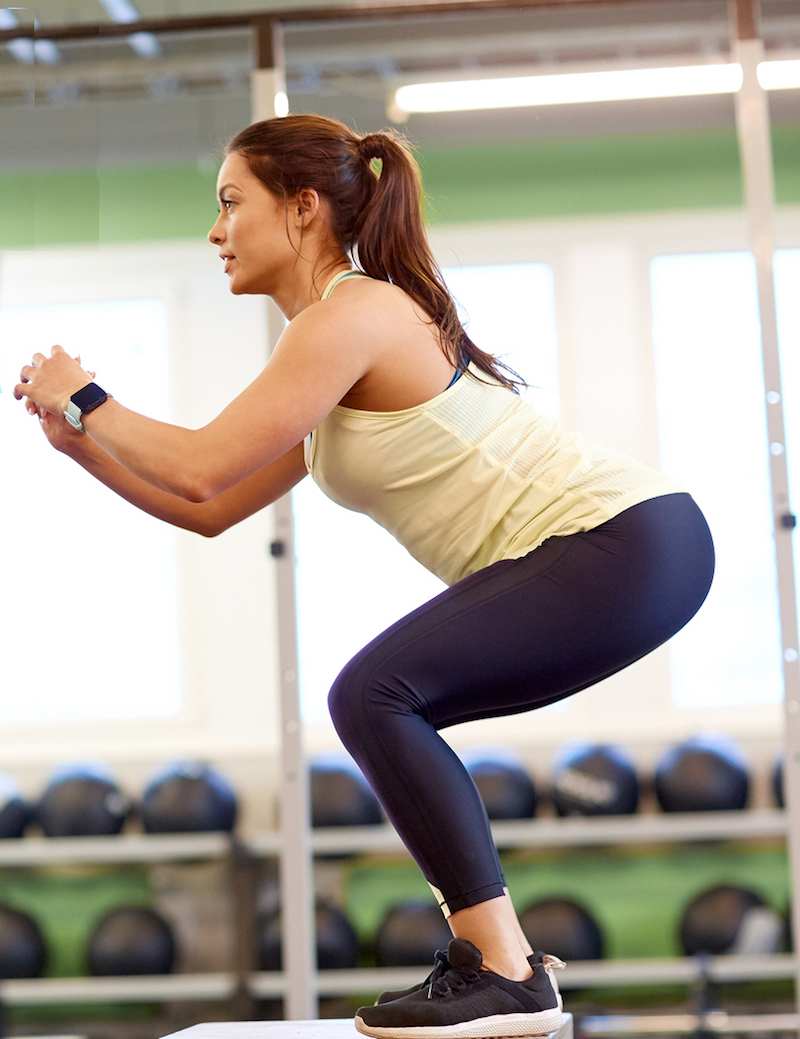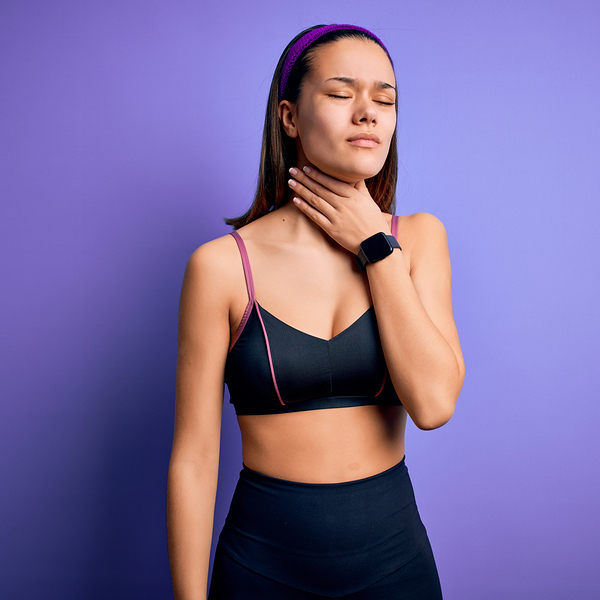NEVER TOO LATE TO START
If you are a sedentary adult, meeting the recommended weekly goal of 150 minutes of moderate aerobic exercise, or 75 minutes of high intensity exercise may seem impossible. But fitness has no retirement age. It is never too late to start exercising and reverse the years.
Consider a large-scale study in 2019 which examined the activity levels of over 315,000 participants, aged 50 to 71 years old at four different points in their lives. The four points were 15 to 18 years; 19 to 29 years; 35 to 39 years; and 40 to 61 years.

The American researchers found participants who were previously inactive, but increased their physical activity in late adulthood (40 to 61 years old) to four to seven hours a week had a 32 to 35% decrease in mortality risk, compared to those who remained inactive.
Participants who were always active lowered their mortality risk by 29 to 36%. The fact that older adults who are new to exercise experience similar gains in life expectancy as older adults who have maintained their activity level throughout their lives suggests it is not too late to start exercising in mid-life.
BIOLOGICAL VS. CHRONOLOGICAL AGE
You cannot change your chronological age, which is based on the number of birthdays you have had, but you can lower your biological age with exercise.
For example, if you are 55 years old, and you can climb up a flight of stairs easily like a 20-year old without panting, or experiencing knee or ankle pain, your biological age is close to 20 years old.
EXERCISE, THE FOUNTAIN OF YOUTH
While we cannot stop time (or tide,) we can slow down the effects of aging. DNA methylation — how the cells and tissues in the body change overtime — is a key indicator of age. Exercise has shown to slow down DNA methylation, and there is a stronger correlation between exercise and changes in DNA methylation in older than younger adults.
We can slow down the epigenetic clock by being active. If you have seen headlines which read, “I Got My Abs At 50!” or “70 Is The New 40,” these physical gains are attainable because no matter what is your age, you can improve your biological age with exercise, and enjoy the health benefits of a younger body.
SEDENTARY LIFESTYLE ACCELERATES AGING
Factors that accelerate the aging process include a sedentary lifestyle, obesity, a poor diet and stress. “Sedentary aging” is a known risk factor for heart failure in middle-age adults, and exercise reduces the risk, according to a study. A lack of physical activity stiffens the left ventricular muscle of the heart, the chamber responsible for pumping blood to the rest of the body, which is a cause of cardiac arrest in mid-life.
The 2018 study, published in the American Heart Association Journals, which examined 61 healthy but inactive adults, aged 45 to 64 years old, found participants who started to exercise were able to prevent an increase in cardiac stiffness linked to “sedentary aging.”
Having an older biological age than chronological age also increases the risk of cancer. For a woman, research shows every 5 years a woman’s biological age is older than her chronological age increases her risk of breast cancer by 2% to 14.3%. So a woman who is in her 30s, but have a biological age of a 50-year old raises her risk of breast cancer by 8% to about 22%.
FOR HEART & CANCER PATIENTS
The health benefits of starting exercise later in life extend to adults who have one or more health issues. A 2019 study by researchers from the University of Cambridge looked at nearly 14,600 adults, aged 40 to 79 years old with cardiovascular disease and cancer. Researchers found the participants achieved substantial longevity benefits by becoming more active, regardless of their post physical activity levels.
The study shows those who were inactive at the start, and who increased to an average of 30 minutes of moderate activity per day reduced their mortality risk by 24%.

FOR EVERYONE
“The most encouraging is you don’t have to be a super athlete, and it’s never too late,” Soren Brage, one of the researchers of the study was quoted to have said in an article about the study, published by the Washington Post.
The health benefits were achieved, irrespective of the participants’ body mass index (BMI,) blood pressure or cholesterol level.
“Even if you have an established risk factor profile, you will still reap the benefits of increasing activity levels,” Brage said.
BECOME MORE YOUTHFUL
Maintaining a youthful appearance is another benefit of exercise. A lack of a “youthful” body shape is a sign of aging, according to researchers from South Korea. The 2013 study examined nearly 244,000 participants, aged 20 to 90 years old.
Researchers found older men tend to have more visceral fat, or fatty tissues in the abdomen. “Abdominal obesity” poses its own set of health and mortality risks.
On the other hand, older women tend to appear shorter. They lose their height due to changes in the vertebrae, a consequence of vertebral fracture, changes in posture and/or osteoporosis.
The South Korean study suggests your body shape reveals your biological age. So a young man with a “pot belly” or a young woman with a stooped posture has an older body than his or her chronological age. Specific exercises like Pilates help reduce visceral fat and improve posture, which reverse the effects of pre-mature aging.
DON’T LIMIT YOURSELF TO ONE TYPE OF EXERCISE
Fitness has no retirement age, and it is never too late to start exercising. If you are just getting started, don’t limit yourself to one type of exercise. A variety of aerobic, strength and stretching exercises, which work your muscles and joints differently, offer more benefits, particularly for older adults.

FOR OLDER ADULTS
The study examined 140 obese adults, aged 65 years or older. All the participants receive dietary planning, but were paired with different types of exercise. One group was given aerobic training, another group received resistance (or strength) training, while the third, had both aerobic and resistance training.
All groups experienced weight loss of 9%, compared to those who were inactive. But the group who received both aerobic and resistance training increased their physical function by 21%.
Participants who had only aerobic or resistance training improved their physical function by a smaller margin of 14% each.
FUNCTIONAL BENEFITS
Being able to pick up a coin from the floor, standing up from a chair, and climbing up or down stairs are examples of physical function which improve with exercise. The study shows a combination of aerobic and strength exercises offers the most functional gain, compared to aerobic and strength only exercises. Maintaining physical function is particularly important for older adults, as it counters age-related frailty.
As the old adage goes, “age is just a number.” Research shows there is no retirement age when it comes to getting fit. You are never too old to enjoy the health and functional benefits of regular exercise. You would still reap the benefits of exercise even if have cardiovascular disease and cancer. Turn back your epigenetic clock. Go back to the future.
REFERENCE
Riebe, D; Ehrman, JK; Liguori, G; Magal, M. (2016). ACSM’s Guidelines for Exercise Testing and Prescription. 10th edition. Pennsylvania, USA/PA: Wolters Kulwer, pp. 4.
Medical Disclaimer: Always consult your physician if you have an existing pain or a pre-existing medical condition before beginning any exercise. The above information is not intended to diagnose any medical condition or replace your healthcare professional.
Sign Up for a Trial
6996 4396 today to learn more or register below:
Start Today
Testimonial
You may also like
5 Exercise Tips for Hypothyroidism
The thyroid gland may be a small endocrine gland, located in the front of the neck, but it plays a big role in controlling the body’s metabolism. Constant fatigue, weight gain and joint pain are common symptoms of an under-active thyroid gland.
Exercise is not on your “to-do” list when you are battling with tiredness. But exercise like Pilates is the best thing you can do…
Learn More


Write a comment: